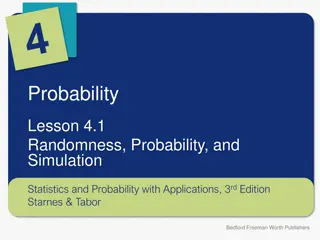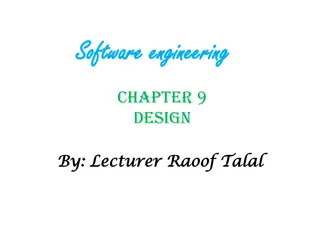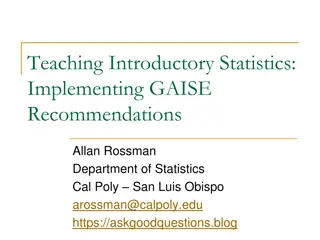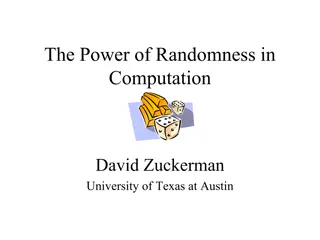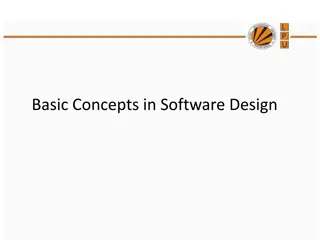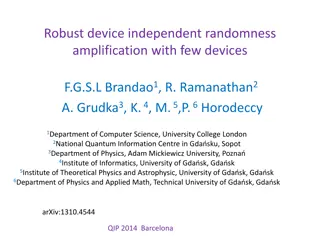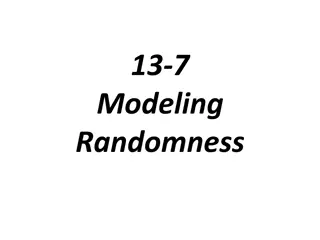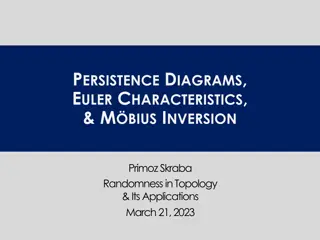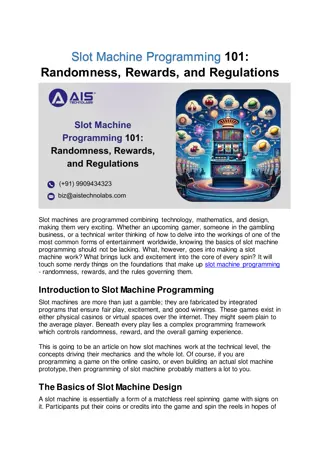Enhancing Chaum Mixes with Randomness Design
This article delves into enhancing Chaum mixes using randomness for improved anonymity. The design incorporates various functions and strategies like timed firing, dynamic threshold limits, and pool management for message processing in each round. Explore the innovative approach presented by Kannabiran Maheswaran.
Download Presentation

Please find below an Image/Link to download the presentation.
The content on the website is provided AS IS for your information and personal use only. It may not be sold, licensed, or shared on other websites without obtaining consent from the author.If you encounter any issues during the download, it is possible that the publisher has removed the file from their server.
You are allowed to download the files provided on this website for personal or commercial use, subject to the condition that they are used lawfully. All files are the property of their respective owners.
The content on the website is provided AS IS for your information and personal use only. It may not be sold, licensed, or shared on other websites without obtaining consent from the author.
E N D
Presentation Transcript
Enhancing chaum mixes with randomness By Kannabiran Maheswaran
1. Quick Introduction 2. Functions 3.Design 4.Attacks 5. Conclusions
Introduction The basic idea here is to design a mix that uses different functions and to randomize the attributes of said functions. Every round is where the mix reconfigures itself. A round consists of a random number of fires Number of Dummy messages D are random every time a mix fires. At the end of a round, the mix fires all messages left in it because of a pool function
Timed - The timer is randomised upon firing - Anonymity of a message is 1/M+D - where M is the number of messages that arrived, and D is the dummy messages
Threshold The Threshold limit (T ) changes upon every fire -Anonymity of a message is 1/T+D
Timed and Threshold Fires when the timer and the threshold reaches a point Anonymity of a message is 1/F+D (F being the messages fired)
Pool Fires P when the pool is P+Q Breaks out of the pool to the next function If revisited within the same Round continues where it was left off Anonymity per message- Prob(Not left in Pool ) * Anonymity of sent messages P/P+Q * 1/P+D Disadvantage : If a Pool is called early and never called till a round ends, a message can sit in the Pool for a while.
Pool Flush At the end of a round, the Pool is flushed Remaining Q messages are send along with D dummies Anonymity of Flushed messages - 1/Q+D
Pseudo Random Generator Mersenne Twister ~0.02 seconds to generate a number.
Round Management After every predetermined number of mix fires, we flush the mix and reset the parameters for function selection. Timed Fn Threshold fn Pool Fn Time&Threshold Fn 20% 30% 20% 30% 0 70 20 50 100 Timed Fn Pool fn Time&Threshold Fn Threshold Fn and the Round After 13% 13% 50% 24% 0 13 76 26 100
Total Anonymity provided for a message per fire p(X) is the probability that the function is called. (1-p(X_pool) *1/Messages fired) + (p(X_pool) *(P/P+Q * 1/P+D) )
Attackers: Never Exact- Size keeps changing Never Certain- Cannot be certain if a message left the system Blending attacks can never reduce the Anonymity of a message to 0 Passive adversaries cannot do anything. Every message is padded.
Dummy Messages Our biggest ally in this mix design are the Dummy messages. Dummy messages can become very expensive for the network Do we add it to the output or the pool? There is also the case where the mix is flooded with messages, causing it to shoot very often. The mix needs to constantly be generating dummy messages when its not firing until it has a pool of 10 times the average number of dummy messages sent. Another important thing is that they have to be padded up or down to the size of the largest message that would be fired, along with other messages being padded up to the said size
Memory for dummies The average size of an email is roughly 25KB without an attachment and 500kb with an attachment. Diving the dummy pool size between the two and padding up to the largest message is most efficient. Say we send an average of 20 dummies per fire. We need to have a Pool of 200 dummies so that we don t spend too much time waiting during intense mix moments. That would constitute about 52MB in storage for dummies.
Memory while waiting to fire Messages that are in the mix that are waiting to fire would depend widely upon the random numbers used, but say for 1000 messages, we would need about 150mb odd considering that 75% of the messages would be under 25 kb according to the email statistical report 2013 -Radicati Group INC Besides, Memory is cheap.
Conclusions: The concept of randomizing the mix functions and variables is novel, but not very powerful. A standard Threshold&Timed Pool mix would achieve similar anonymity with dummy messages while making it uncertain and inexact. This mix has randomness where it tends to have less delay between input of a message and output of a message (ie, not sitting in a pool) as compared to just a pool mix where a message may take a long time to leave the pool.



